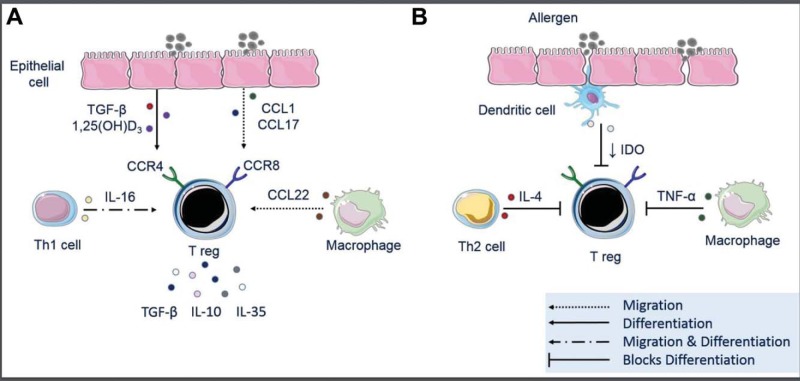Figure 1.
The influence of airway-derived factors in regulatory T cell (Treg) migration and differentiation. (A) The presence of Tregs in the airway can be influenced by a number of locally produced mediators. Airway epithelial cells can produce factors such as 1,25-dihydroxyvitamin D3 (1,25[OH]D3) and transforming growth factor (TGF) β both of which can induce the differentiation of naive T cells to become Tregs. Epithelial cells also produce chemotactic factors, such as chemokine (C-C motif) ligand (CCL) 1 and CCL17, which induce Treg migration through C-C Chemokine Receptor (CCR) 4 and CCR8 receptors signaling. Mediators made by local immune infiltrates, such as macrophage production of CCL22, and T-helper (Th) type 1 cell production of interleukin (IL) 16 can also induce Treg migration to the airway. (B) Airway-produced factors can also impair Treg functions. Th2 and proinflammatory cytokines, such as IL-4 and tumor necrosis factor (TNF) α, respectively, can skew naive T cells away from Treg differentiation. Impaired epithelial membrane and cell-cell junctional integrity in asthma, Allergic rhinitis (AR) and chronic rhinosinusitis with nasal polyps (CRSwNP) allow for the increased passage of antigen into the subepithelial space, which, in turn, can activate dendritic cells and drive them to promote a proinflammatory state characterized by reduced indoleamine 2,3-dioxygenase (IDO).

